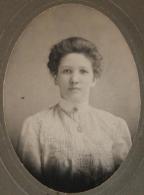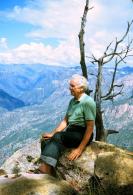Archive
The Haffenreffer Museum's Archival Collection.
Archive
The Haffenreffer Museum's Archival Collection.
About the Archive
The Haffenreffer Museum of Anthropology archival collections are comprised of materials of cultural and historical significance that enhance the research value of the ethnographic and archaeological collections. In order to provide primary sources for our collections by supporting the Museum’s Mission Statement, the archives are focused on materials that directly relate to or accompany acquisitions. In addition, the Collection Research Center library contains over 10,000 volumes, which provide a vast resource of reference materials for researchers.
Access Finding Aids through RIAMCO
Archive Overview
Our extensive archival holdings include: our founder Rudolf F. Haffenreffer’s museum records; publication files and images; archaeological and ethnographic fieldwork notes and photographs; student theses, dissertations, and research projects; donor photographs and collection notes; past exhibit documentation including text and images; collection related images, film, video and audio as well as research notes from visiting artists and scholars and Education Department archive and lecture videos.
27 linear feet
Exhibition Records
8 linear feet
Event Videos
7 linear feet
Publications
242 linear feet
Collection Images
(Slides, transparencies, paper photos.)
27 linear feet
Photo Archive
258 linear feet
Museum Archives
650 linear feet
Reference Library
50 linear feet
Registration Records
Use of the Archives
Please Note
HMA's archival research support will be on hiatus through the end of 2026 due to the demands of packing and moving our museum. We apologize and appreciate your understanding. Visit https://hma.brown.edu/connect/support-museum to learn more and donate to our move effort.
These holdings are not yet digitally accessible. If you would like to access them for your research, please contact the Museum: HaffenrefferMuseum@brown.edu.
Costs of reproducing documentary materials and photographs may be charged to investigators. No distinctions in such charges shall be made on the basis of the value or rarity of the original materials. Methods of reproduction may be limited if necessary to protect the originals from possible damage.
The Haffenreffer Museum of Anthropology retains copyright on all images in our collection.
Any use of Haffenreffer Museum images requires expressed permission. Certain fees may be charged and payment is required before permission can be granted. Submit the Image Permission Request Form to HaffenrefferMuseum@brown.edu.
 Emma Shaw Colcleugh (1846-1937) was a Rhode Island schoolteacher, traveler, and journalist who collected hundreds of ethnographic objects during trips through the North American Subarctic, Arctic, the Pacific, Caribbean, Africa, and South America.
Emma Shaw Colcleugh (1846-1937) was a Rhode Island schoolteacher, traveler, and journalist who collected hundreds of ethnographic objects during trips through the North American Subarctic, Arctic, the Pacific, Caribbean, Africa, and South America.  Rhode Island artist Gino E. Conti (1900-1983) took over 3,700 photographs in the summers of 1958, 1962-1965, and 1969-1973 documenting life on the Hopi, Apache, and Navajo (Dine) reservations, as well as visits into northern Mexico with the Tarahumara. During these travels, Conti also collected numerous Hopi Katsina dolls, (including a large sample by Wilson Tawaquaptewa) blankets, pottery, and other objects. The bulk of these ethnographic collections and photographs were bequeathed to the museum. The archival collection also includes a number of items not related to the photographs such as sketches, postcards, religious and architectural images, newspaper clippings and a few exhibition flyers featuring Conti’s work.
Rhode Island artist Gino E. Conti (1900-1983) took over 3,700 photographs in the summers of 1958, 1962-1965, and 1969-1973 documenting life on the Hopi, Apache, and Navajo (Dine) reservations, as well as visits into northern Mexico with the Tarahumara. During these travels, Conti also collected numerous Hopi Katsina dolls, (including a large sample by Wilson Tawaquaptewa) blankets, pottery, and other objects. The bulk of these ethnographic collections and photographs were bequeathed to the museum. The archival collection also includes a number of items not related to the photographs such as sketches, postcards, religious and architectural images, newspaper clippings and a few exhibition flyers featuring Conti’s work.  Giddings (1909-1964) was named the museum’s first Director and Brown University’s first anthropology professor after the Haffenreffer Family gifted the Museum and Mount Hope property to Brown University in 1955. A pioneer of dendrochronology and a preeminent Arctic archaeologist, J. Louis Giddings was a prolific writer, publishing over 70 articles in academic journals and several seminal books on Arctic cultures and archaeology. This archival collection encompasses the years from 1937 until 1967, with the bulk of the material ranging from 1956 to 1964. It contains materials such as business records related to his numerous archaeological expeditions to Alaska, including expense reports, invoices, purchase orders, field notes, grant applications, biographical notes, book reviews, manuscripts, and conference proceedings. In addition, the archive includes some early business records of the Haffenreffer Museum of the American Indian. Also included in this collection are correspondence, newspaper clippings, printed material, photographic prints, slides, and films. Additional materials were collected by his wife, Ruth (Bets) Warner Giddings and represent continued work on Giddings’ archaeological sites in Alaska by his colleagues after his untimely death in December 1964.
Giddings (1909-1964) was named the museum’s first Director and Brown University’s first anthropology professor after the Haffenreffer Family gifted the Museum and Mount Hope property to Brown University in 1955. A pioneer of dendrochronology and a preeminent Arctic archaeologist, J. Louis Giddings was a prolific writer, publishing over 70 articles in academic journals and several seminal books on Arctic cultures and archaeology. This archival collection encompasses the years from 1937 until 1967, with the bulk of the material ranging from 1956 to 1964. It contains materials such as business records related to his numerous archaeological expeditions to Alaska, including expense reports, invoices, purchase orders, field notes, grant applications, biographical notes, book reviews, manuscripts, and conference proceedings. In addition, the archive includes some early business records of the Haffenreffer Museum of the American Indian. Also included in this collection are correspondence, newspaper clippings, printed material, photographic prints, slides, and films. Additional materials were collected by his wife, Ruth (Bets) Warner Giddings and represent continued work on Giddings’ archaeological sites in Alaska by his colleagues after his untimely death in December 1964. Spinden (1879-1967) worked as an anthropologist, archaeologist, ethnographic art historian, and scholar. He held Curatorial positions at: The Peabody Museum, Harvard; The American Museum of Natural History, New York; The Buffalo Museum of Arts and Sciences; and The Brooklyn Institute (later the Brooklyn Museum).
Spinden (1879-1967) worked as an anthropologist, archaeologist, ethnographic art historian, and scholar. He held Curatorial positions at: The Peabody Museum, Harvard; The American Museum of Natural History, New York; The Buffalo Museum of Arts and Sciences; and The Brooklyn Institute (later the Brooklyn Museum).